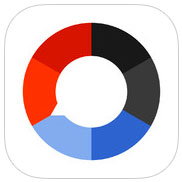Angry posts spread faster on social networks than those indicative of any other emotion, according to a recent study.
Researchers at Beihang University set out to test whether homophily — the tendency of people to bond with those who are similar — occurs in social media interactions.
The team analyzed 70 million posts collected from Sina Weibo. China’s Twitter-like social network, Sina Weibo has more than 500 million users and averages 100 million posts in a day. The researchers tracked posts by users who had at least 30 interactions on the site from April to September of 2010.
They then assigned them — based largely on the use of emoticons — into four categories: joy, anger, sadness or disgust. Previous studies often had characterized social media posts only as positive or negative.
The team then tracked how the various messages spread. For instance, if someone posted a joyful tweet, they would note if their connections responded with a similarly joyful message or posted a happy message of their own, and so on.
Spreading Anger
Of the four emotions, anger spread the quickest. The angry messages spawned a path of angry posts up to three degrees of separation from the original. When the researchers looked more closely at the types of messages that sparked anger, they found most dealt with foreign conflicts, domestic social issues such as food security, or political scandal.
“We think that our most surprising finding in this paper is that in Weibo, anger is the most influential sentiment — not joy,” Jichang Zhao, Ph.D. candidate at Beihang University and second author on the paper, told TechNewsWorld. “Intuitively, we thought that joy should be the one with power. But our results indicate that in Weibo, angry information has the potential to spread fast and broadly.”
That’s not to say social connections didn’t want to share joy — happy messages were also likely to be spread, especially among close connections. Sadness and disgust generated the least amount of sharing.
China vs. US
Advertisers looking to use social media to promote their brand keep track of the latest analytic information on how they can effectively reach a large audience. However, before marketers using Twitter or Facebook read too deeply into this particular study, it’s important to consider that the research was done using posts only from Weibo, said Jim Tobin, president of Ignite Social Media.
“What people feel comfortable talking about and sharing online would be heavily influenced by social norms and expectations,” Tobin told TechNewsWorld. “Given that, the types of information spreading fastest online would likely vary culture to culture.”
A tweet from a verified popular account carries much more weight than even the angriest ones from people with fewer followers, suggested Pim Bilderbeek, principal analyst at GigaOM Pro and founder of Bilderbeek Consulting.
“The fast spreading of tweets is more a factor of who is retweeting or tweeting than the subject or content of the tweet itself, I would say,” he told TechNewsWorld. “One angry tweet by Justin Bieber about a brand will cause more of a problem than 1,000 tweets from someone with only a few connections, even if it does get retweeted.”
Still, the information from the study could help marketers learn to take a more critical look at their social media postings from their consumers’ perspectives and try to determine what kind of emotion it might elicit, said Zhao.
“Our results reveal that the sentiment of the information could affect its spread in social networks, like anger boosting the propagation in Weibo,” he pointed out. “So marketers can consider more about how people react after reading the news or advertisement.”





















































